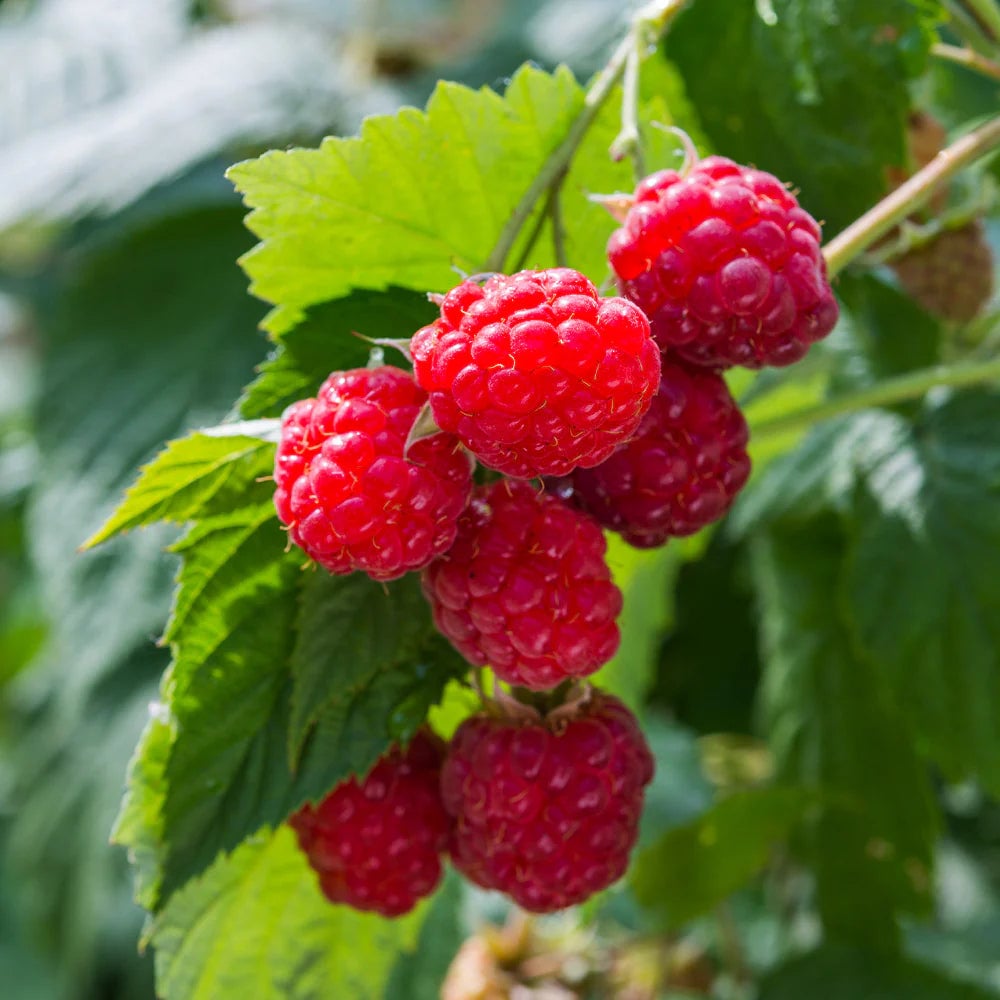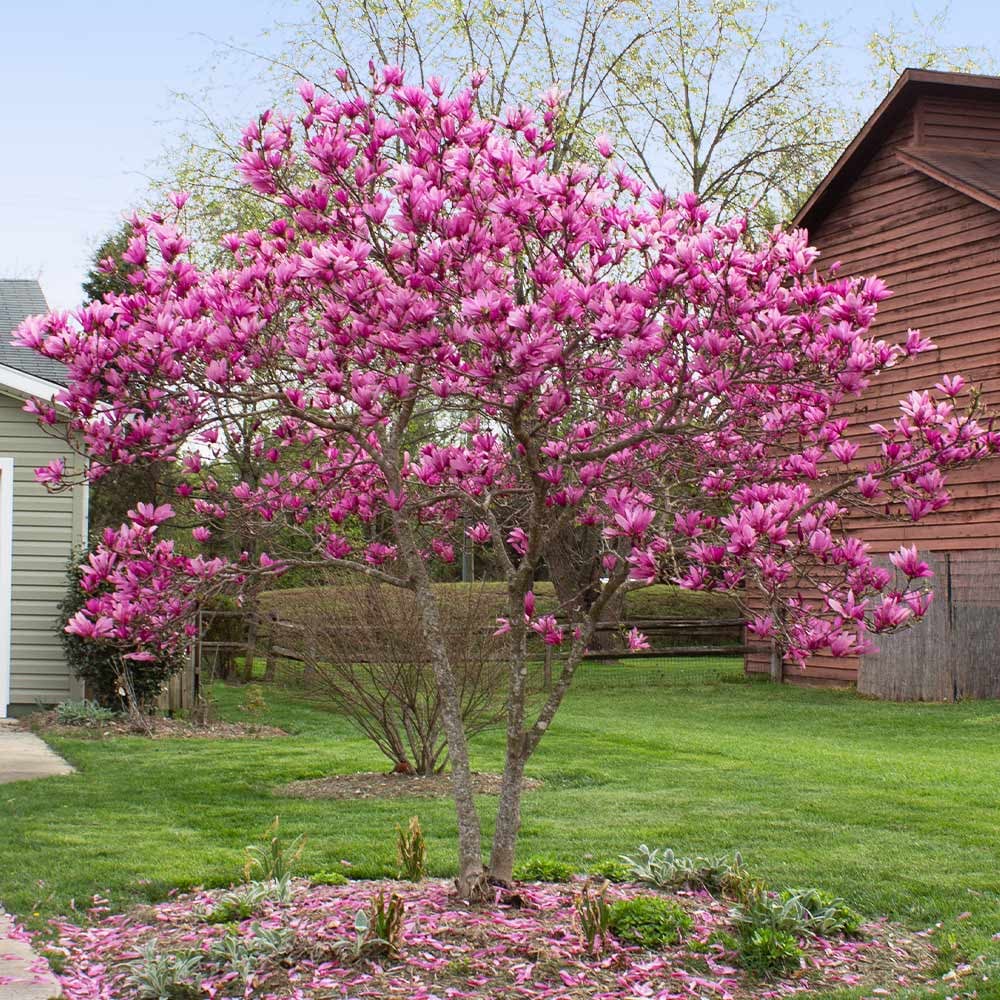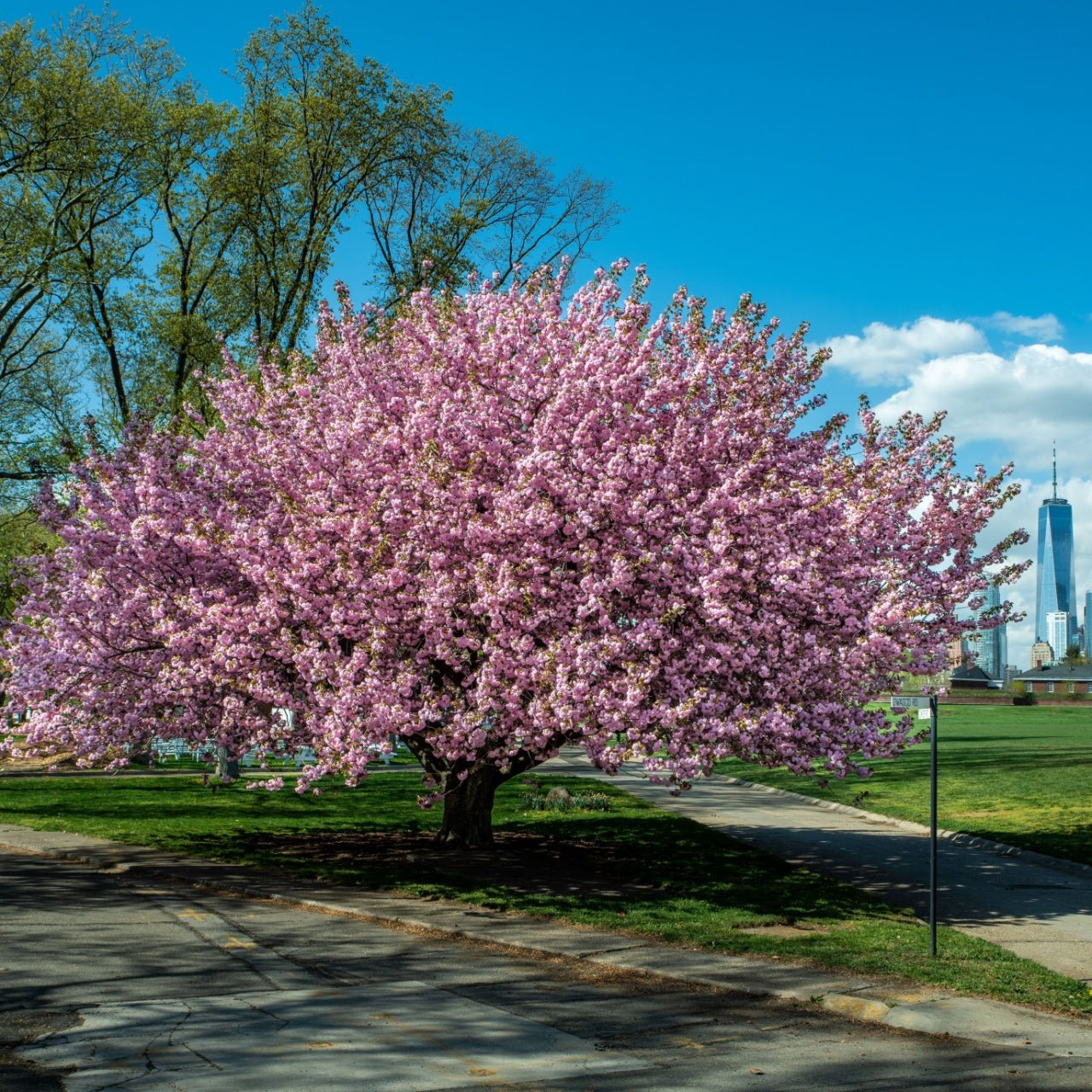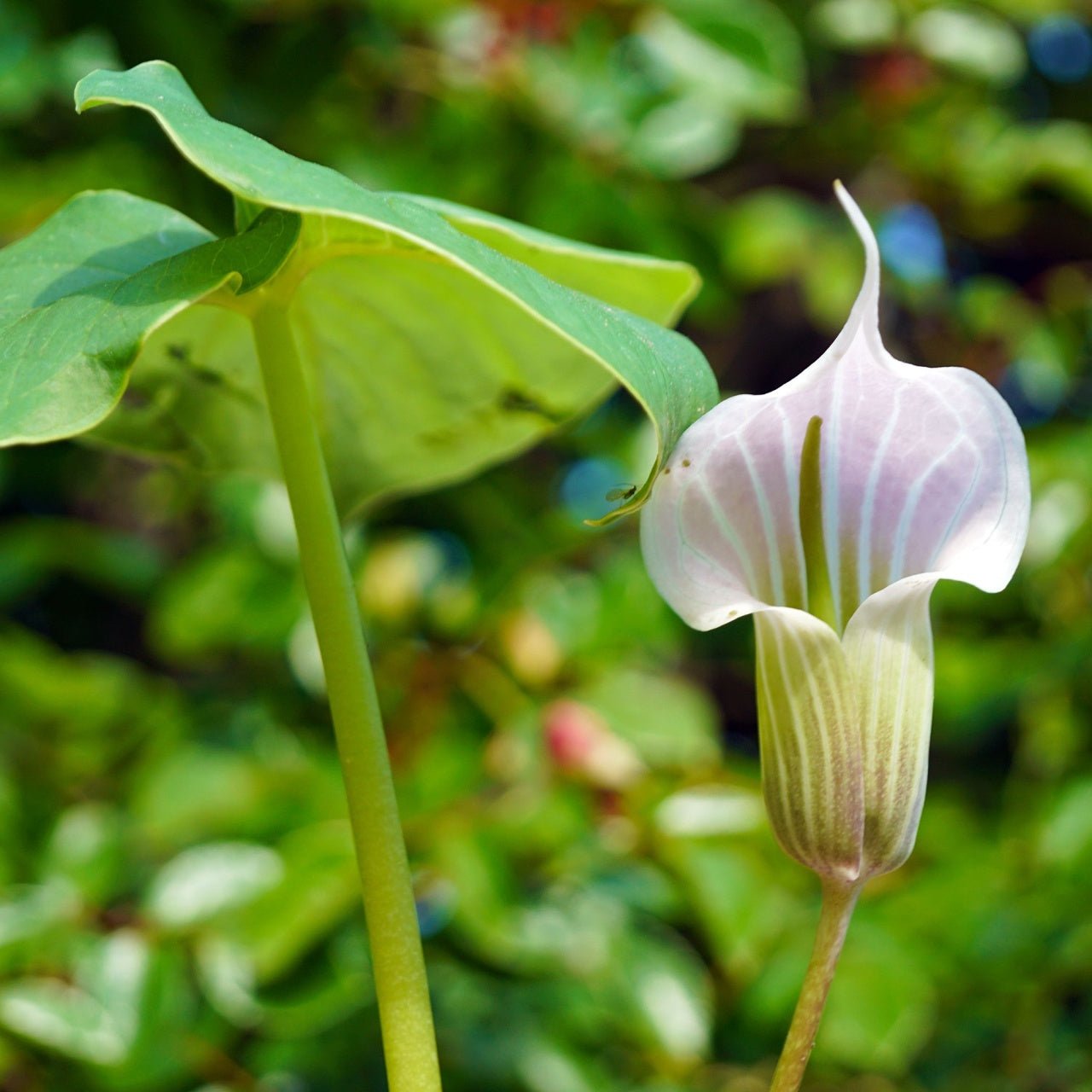

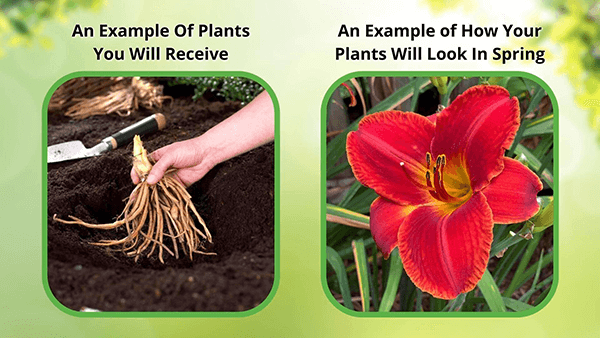
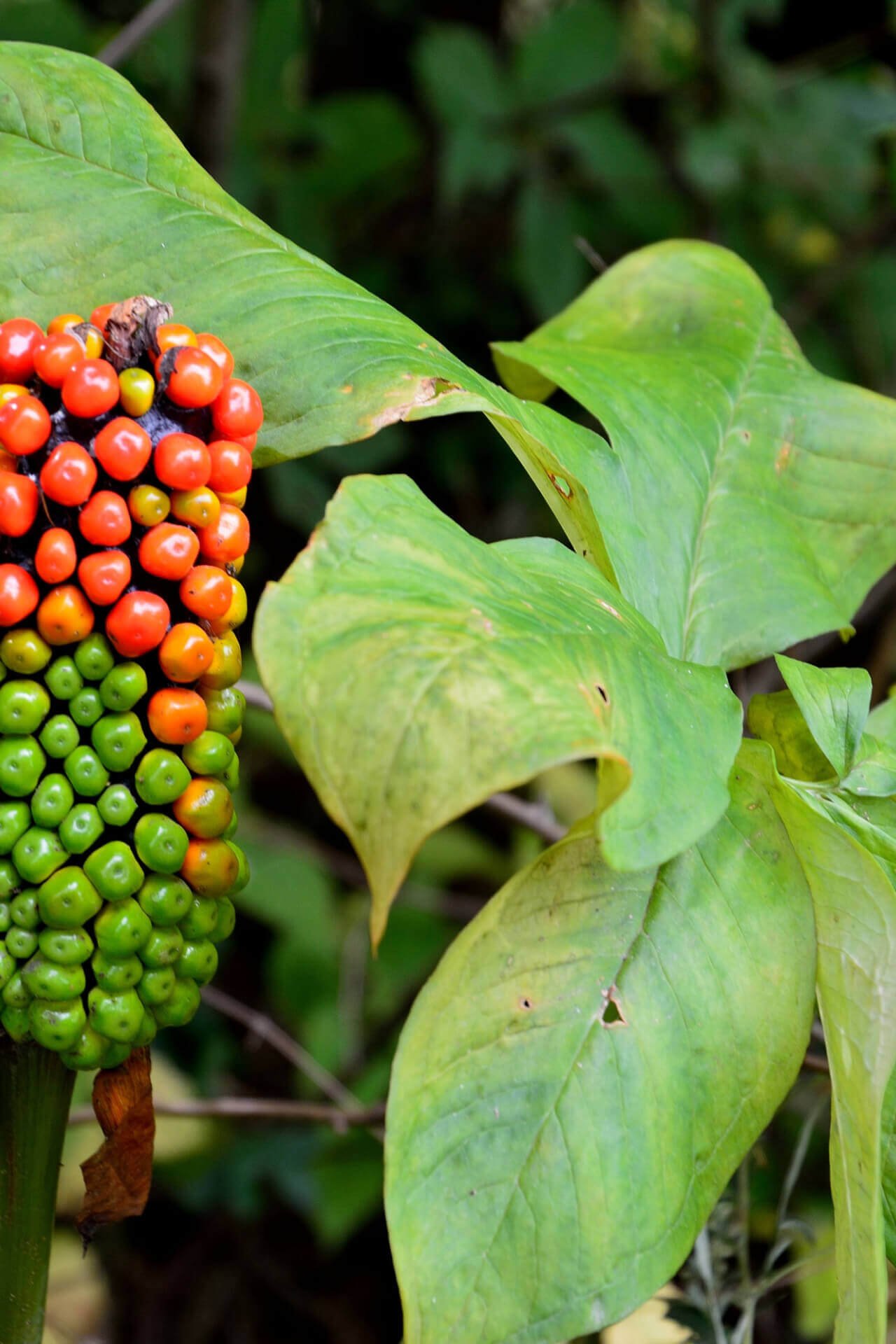

Jack In The Pulpit
Unique, eye-catching woodland beauty
Thrives in shady garden areas
Adds exotic touch to landscapes
Thrives in
ZONE 4ZONE 5ZONE 6ZONE 7ZONE 8ZONE 9This plant ships:
7-10 DaysJack in the Pulpit - Arisaema triphyllum
Jack in the Pulpit (Arisaema triphyllum) is an herbaceous perennial with unexpected, vase-like flowers and unique leaves.
Plant Details - Jack in the Pulpit
Family: Araceae
Light Requirement: Full to Partial Shade
Water Needs: Moist
Height: 1 – 2 ft.
Spread: 12 – 18 in.
Growth Rate: Fast
Bloom Time: Spring
Flower Color: Green
Wildlife Value: Attracts bees
Landscape Uses and Maintenance – Jack in the Pulpit
Jack in the Pulpit is one of many perfect plants for a shady spot in your garden. Flowers are green and have distinctive stripes of dark purple. Add a unique touch to any garden bed with this plant that will make you wonder if there are fairies living somewhere near it.
The flowers bloom in the spring and will then give way to a stalk of red berries that will mesmerize you, your family.
Perfect for your shade garden, woodland garden, or as a rare choice for the cottage garden. Pair with Mayapple, Wild Ginger, Bleeding Heart, and ferns to enjoy a serene woodland garden.
This plant needs plenty of shade, so plant it in full to partial shade. Avoid planting in the sun; it will get sun scald and discoloration.
Give it a location in your garden with moist to wet but well draining soil. This is an ancient-looking plant that is naturally found in locations such as forests, marshes, swamps, and woodlands. Avoid planting in heavy clay soils.
This is a low maintenance plant that needs little care during the growing season. Only water this plant in the event of drought. Add humus or other organic matter to the soil in order to mimic the rich forest floor environment.
Once the seeds have matured and have fully turned a bright red, they are able to be harvested from the plant and then sown in the soil immediately.
This is a deer resistant plant. Pest and pathogen resistant, too.
Noteworthy Characteristics
Jack in the Pulpit will attract plenty of pollinators to your garden. The flowers are pollinated by fungus gnats.
The berries will attract birds including Wood Thrush and wild pheasants to your garden.
This Is How Your Plants Will Look upon Delivery
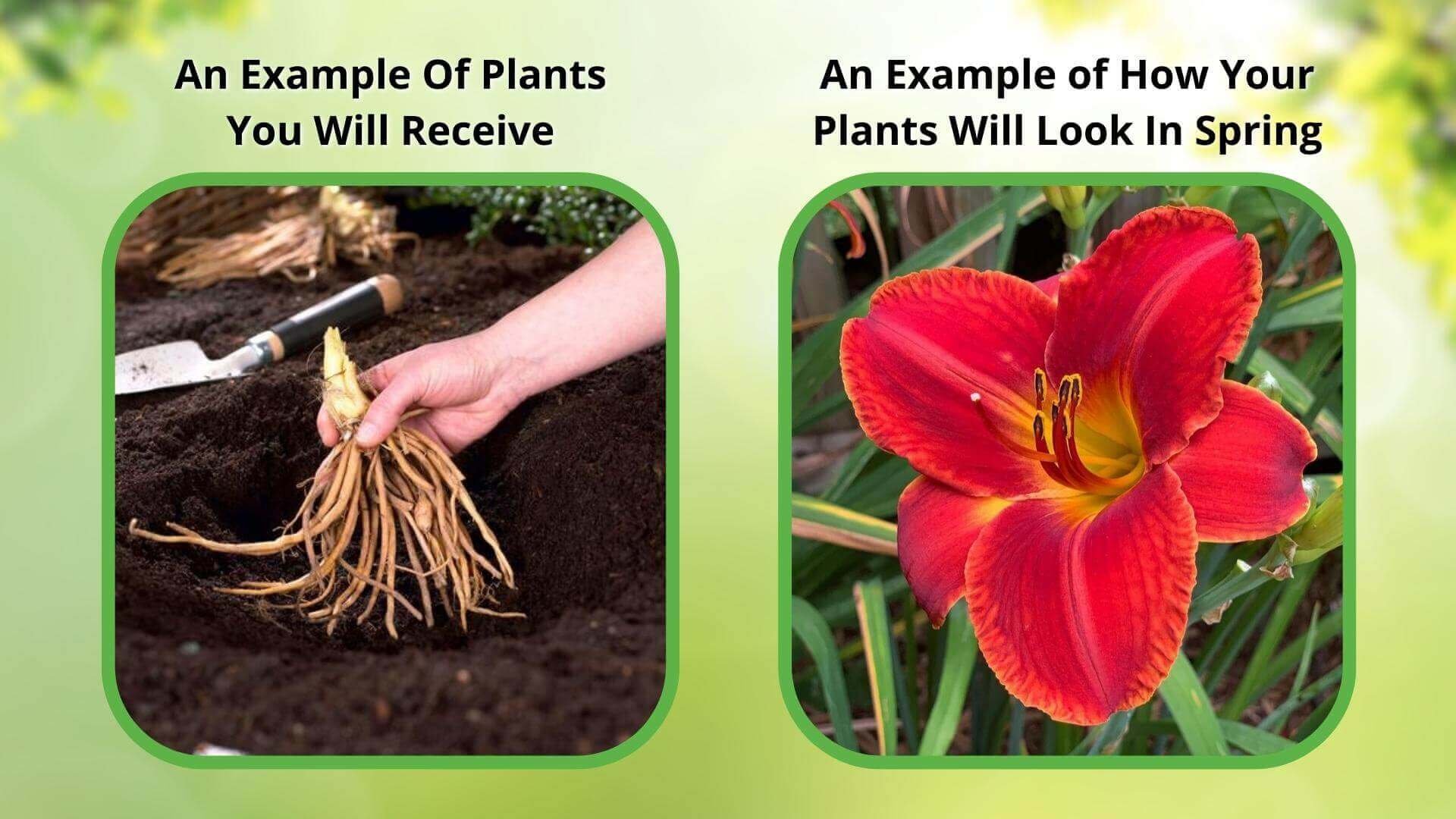
Bloom Season
Spring
Bloom/Foliage Color
White
Height at Maturity
Under 12"
Care
Jack in the Pulpit prefers rich, moist soil. Frequent watering keeps the soil damp. Lay mulch near the base to maintain moisture and protect roots. Use a balanced, slow-release fertilizer and avoid over-fertilizing. Protect from extreme heat.
Plant Reproduction
Jack In The Pulpit spreads and colonizes through both sexual and asexual reproduction.
Shipping date depends on the date displayed and chosen when you order from the product's page.
We do not accept returned plants. If you purchased an extended warranty we do accept claims, please navigate to the warranty page for instructions HERE






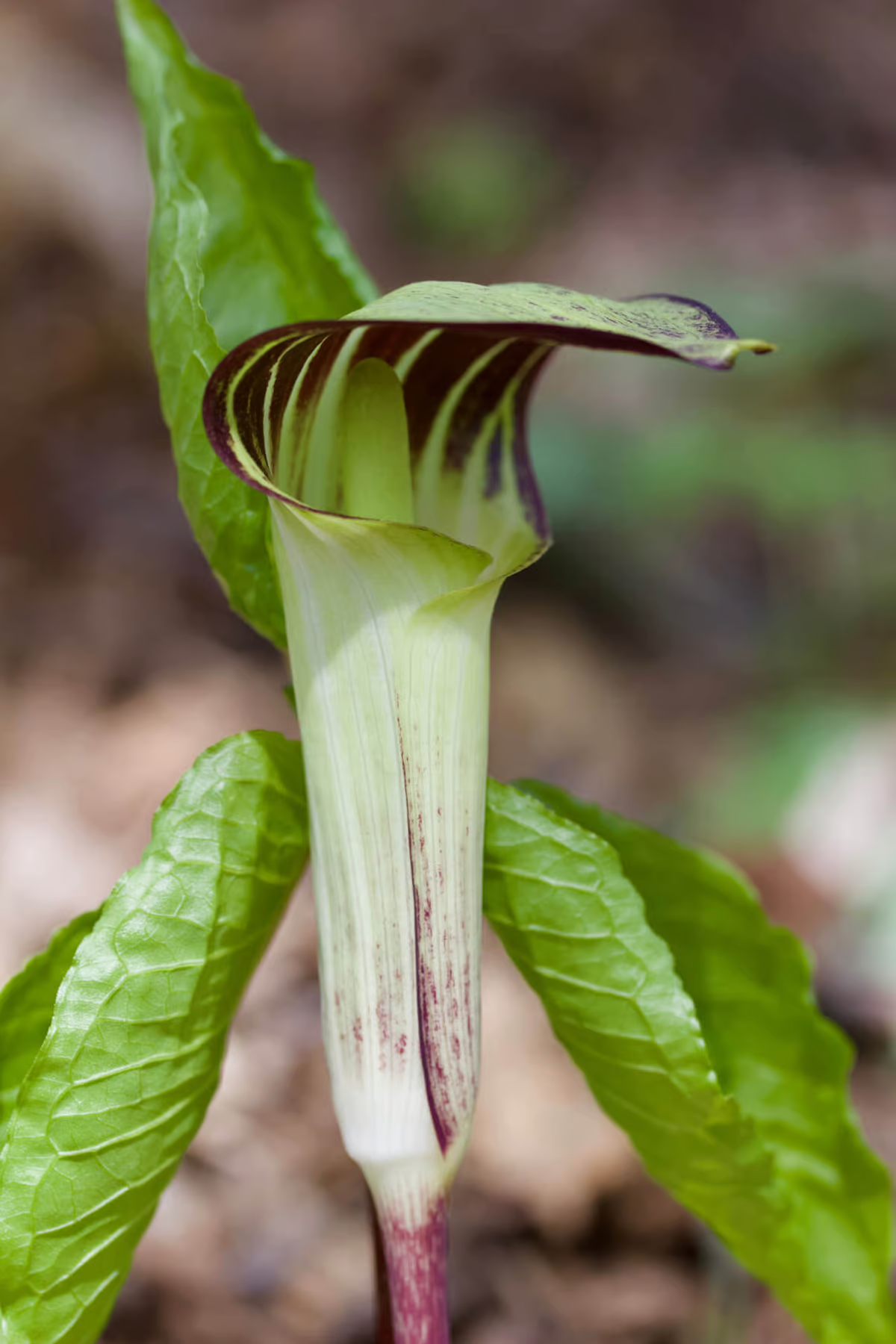
Thrives in Shade:
Ideal for low-light areas, Jack in the Pulpit brightens up shaded spots where other plants may struggle.
Distinctive Blooms:
The Jack in the Pulpit showcases unique, hooded flowers with a captivating shape, making it a standout in any garden.
Adds Unique Visual Interest:
Its distinctive hooded flowers and unusual shape provide a captivating focal point in the garden.
Requires Minimal Maintenance:
Once established, it needs little care, making it a great choice for low-maintenance gardens.
Caring Tips
How do I care for my Jack In The Pulpit?
Each box contains detailed care instructions and information about your product. But here's the basics.
Care Tips
Jack in the Pulpit prefers rich, moist soil. Frequent watering keeps the soil damp. Lay mulch near the base to maintain moisture and protect roots. Use a balanced, slow-release fertilizer and avoid over-fertilizing. Protect from extreme heat.
Light Requirements
Jack in the Pulpit (Arisaema triphyllum) thrives in dappled or filtered sunlight. It prefers shady woodland conditions with indirect light, mimicking its natural forest habitat. Ensure it receives protection from direct sun to maintain its vibrant foliage and unique blooms.
Hardy Planting Zones
4 • 5 • 6 • 7 • 8 • 9
Header
Use this content to share information about your store and products.
Frequently Asked Questions
How often should I water my plants?
How do I know if my plant is getting too much or too little sunlight?
What should I do to prepare my plants for winter?
What are the signs that my plant needs fertilizing?
How can I prevent pests from damaging my plants?
How do I choose the right plant for my climate zone?



